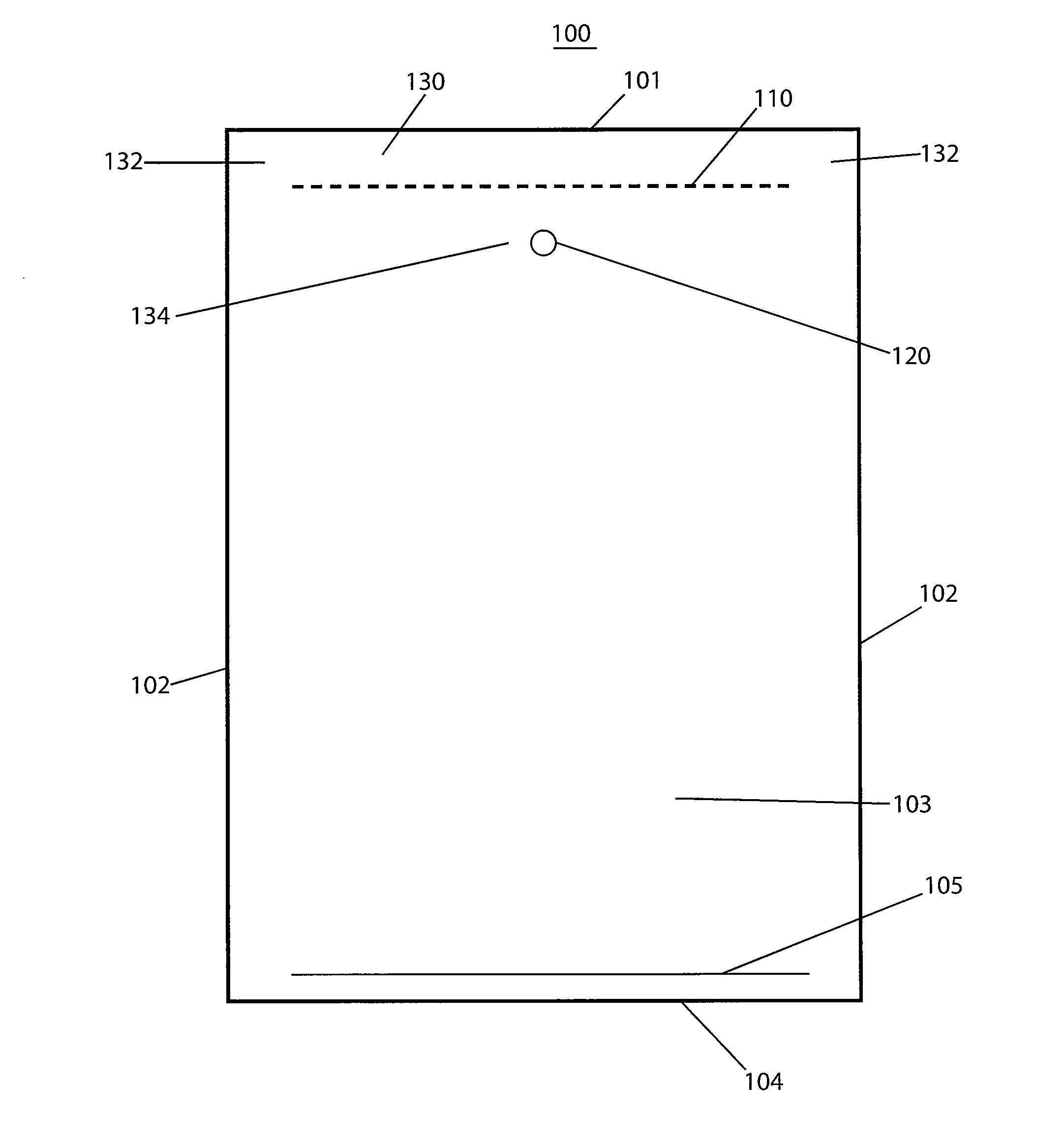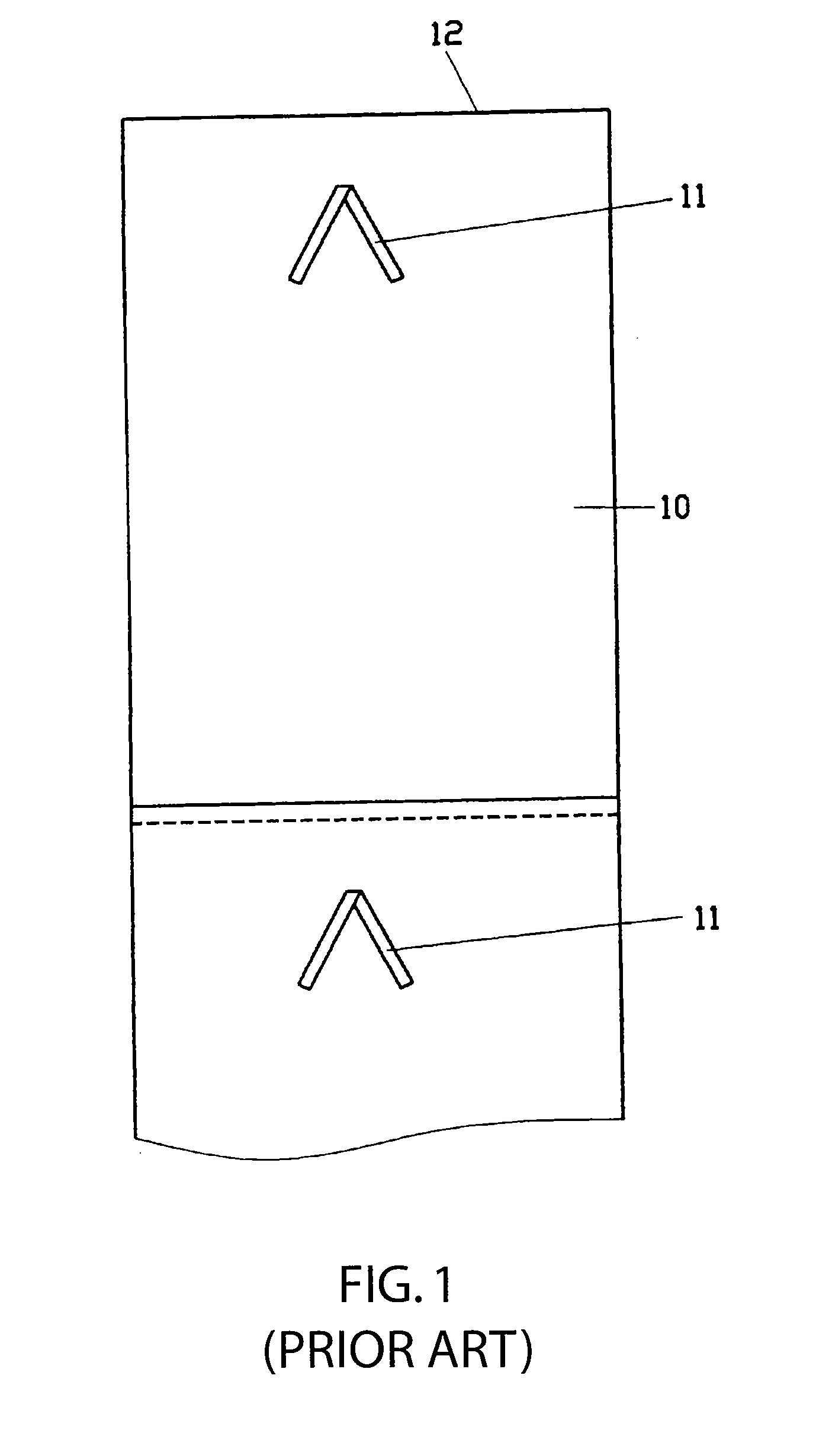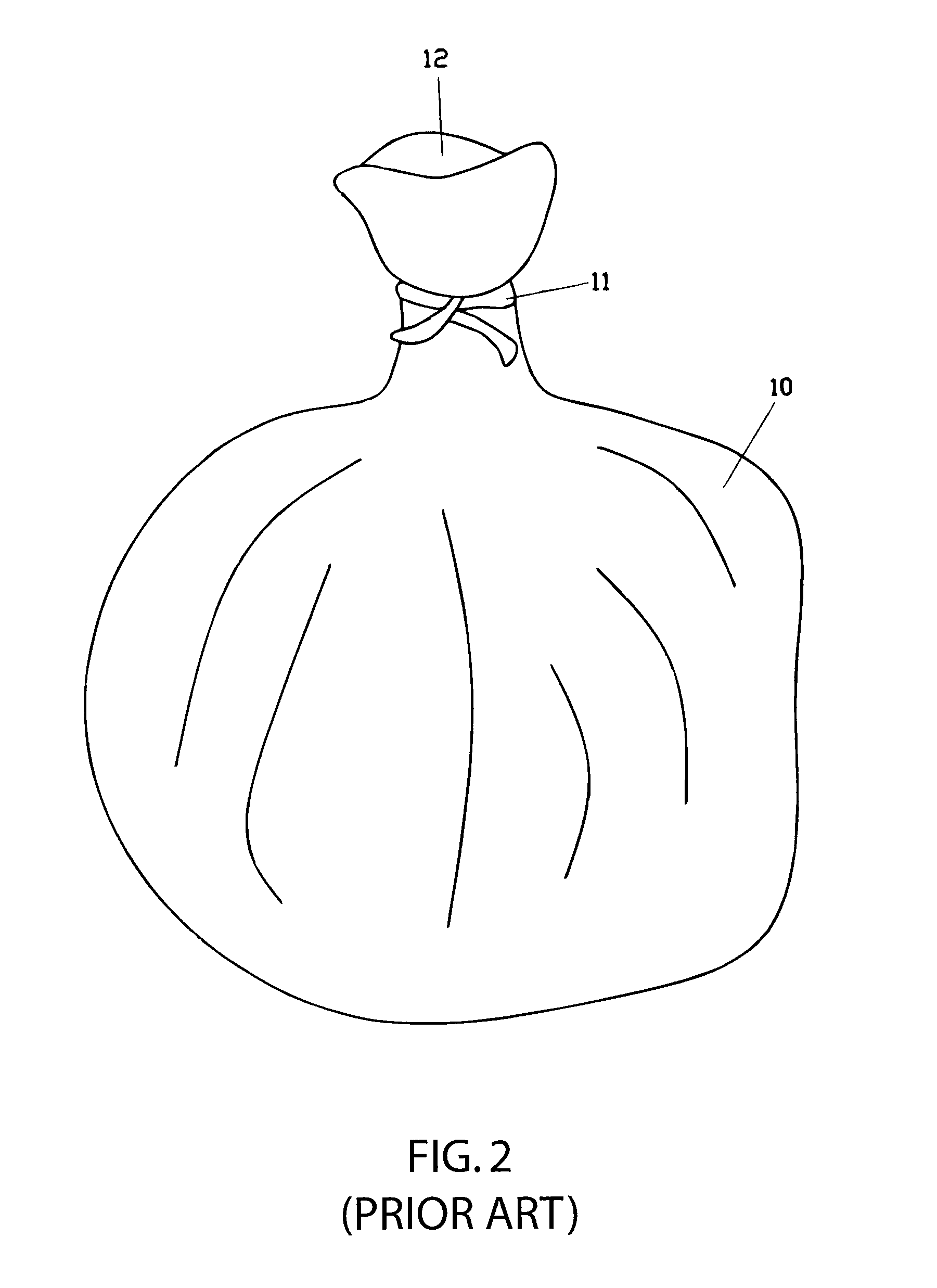Integral closure system for a flexible bag
a bag and integrated technology, applied in the field of flexible bags, can solve the problems of limited bag volume, difficult knotting, and limited bag utilization ratio, and achieve the effect of cost-effective production
- Summary
- Abstract
- Description
- Claims
- Application Information
AI Technical Summary
Benefits of technology
Problems solved by technology
Method used
Image
Examples
Embodiment Construction
[0035]The present invention is directed to an improved closure system for flexible bags, including for example conventional blown film garbage or trash bags (for example, comprising one of LDPE, LLDPE and HDPE) and merchandise bags (for example, comprising one of burlap, woven polyethylene and non-woven polyethylene). The inventive system requires no additional material components be added to the bags, and forms the closure system integrally with the bag. As a result, components of the closure system cannot be misplaced or lost during use of the bag. Moreover, the closure system is cost-effective to produce, and is easily operated by a single user to effectively close the bag without significantly compromising the utilization ratio of the bag.
[0036]FIG. 7 depicts a flexible bag 100 having a closure system according to an embodiment of the present invention. While the bag 100 is depicted as a conventional, flat-mouth extruded plastic bag (for example, comprising one of LDPE, LLDPE an...
PUM
 Login to View More
Login to View More Abstract
Description
Claims
Application Information
 Login to View More
Login to View More - R&D
- Intellectual Property
- Life Sciences
- Materials
- Tech Scout
- Unparalleled Data Quality
- Higher Quality Content
- 60% Fewer Hallucinations
Browse by: Latest US Patents, China's latest patents, Technical Efficacy Thesaurus, Application Domain, Technology Topic, Popular Technical Reports.
© 2025 PatSnap. All rights reserved.Legal|Privacy policy|Modern Slavery Act Transparency Statement|Sitemap|About US| Contact US: help@patsnap.com



